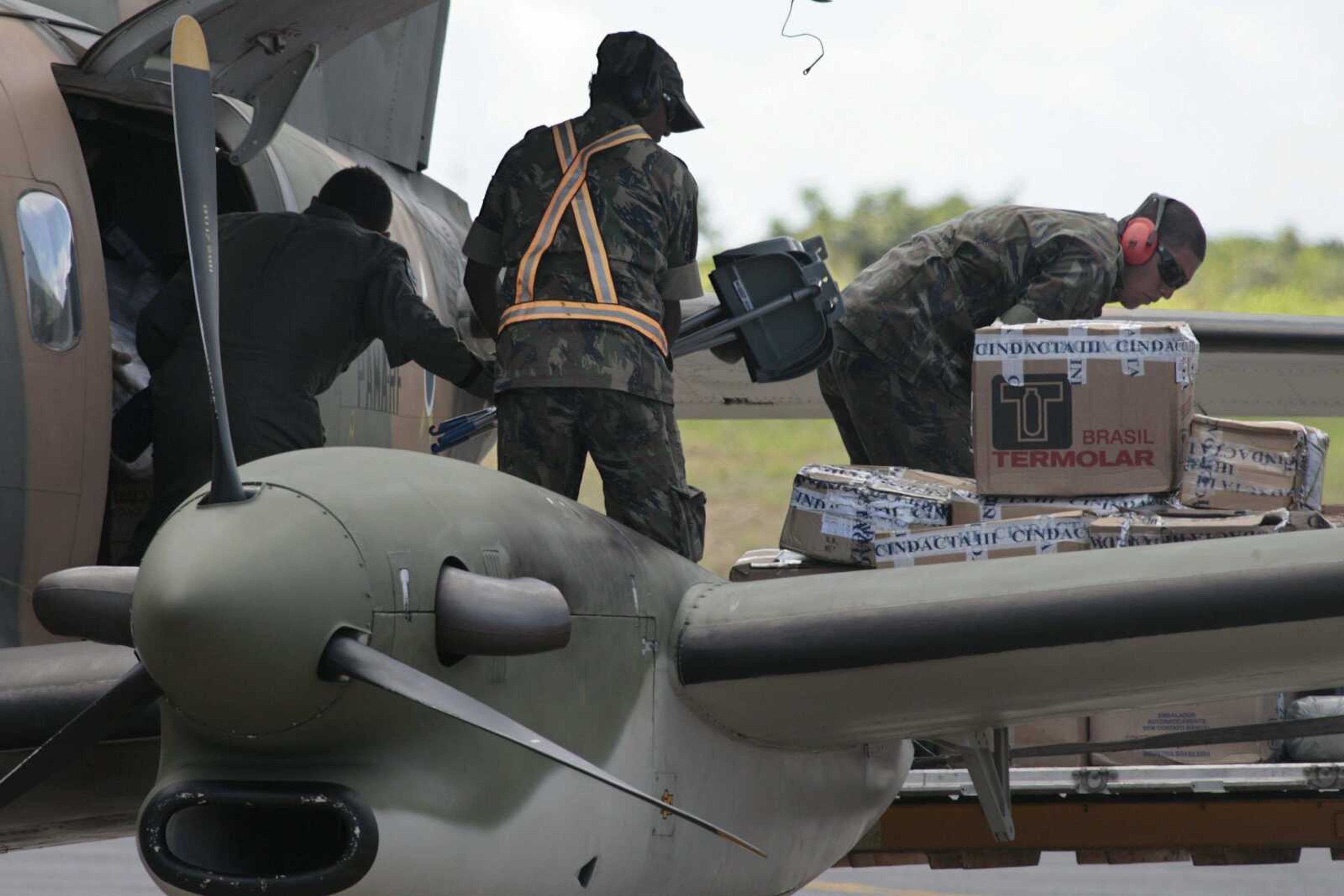BRUSSELS -- The flight recorders from Air France Flight 447 could be scattered nearly anywhere across a vast undersea mountain range that lies as much as four miles below the surface of the Atlantic Ocean.
In those remote waters between Brazil and West Africa, variations in temperature and salinity can reduce visibility and obscure homing signals from the devices. And for salvage crews, time is short because the black boxes will only emit signals for a month.
Search planes and ships located more debris from the Airbus A330 on Wednesday, but high seas and heavy winds delayed the arrival of deep-water submersibles that could be used to find wreckage on the ocean floor.
The head of France's accident investigation agency, Paul-Louis Arslanian, said he was "not optimistic" that officials would ever recover the flight data recorder or cockpit voice recorder from the plane, which disappeared Sunday night minutes after flying into a dangerous band of storms. The cause of the crash is still a mystery.
Water in the area is said to run as deep as 22,950 feet, possibly prohibiting the use of manned submersibles.

Instead, remotely operated vehicles, or ROVs, will probably be used because they are better equipped to withstand immense water pressures.
"Even ROV equipment can hardly work at those depths, but it remains the best available option," said Tor Norstegard, an investigator with Norway's aviation accident investigation board and an expert in recovery of wreckage from the North Sea.
"It's one thing to go down to look at things, but it's a much greater problem to take equipment down in order to bring up pieces of wreckage."
Flight recorders aboard airliners do not float, and the major safety agencies do not require them to do so, but many experts have called for that to change. Some military transports have a secondary, detachable recorder on top of the fuselage that is designed to float.
The underwater locator beacons on the plane's flight recorders are designed to emit continuous signals for about a month. That usually gives salvage crews ample time to locate and recover them.
The beacons have a range of about 3.7 miles, which means recovery ships might have to deploy a listening device more than a half-mile below the surface to detect the signals.
Norstegard said the Air France search may take a long time because the deep waters contain layers that vary in temperature and salinity.
Those changing layers "can deflect or block the signals emitted from the pingers, making it virtually impossible to locate them," Norstegard said. "You have to wait for the right water conditions and that can take time."
The cameras aboard ROVs are normally used only when the vehicle is close to wreckage because its lights can only illuminate a few meters in the dark depths. In especially murky water, the cameras become useless.
"In that case, you need to use side-scan sonars, which can give you a lateral picture of what is on the sea floor," said Martin Puggaard, chief inspector of air accidents at the Danish air safety agency.
In either case, surface conditions will also affect the recovery work. In particularly heavy swells, ROVs are difficult to control because the long cables that connect them to surface ships tend to jerk back and forth with the wave action.
Both investigators predicted that search crews would have to focus on recovering the black boxes and not on bringing up all the wreckage, as would be done in shallow coastal waters.
When they find more wreckage, searchers will probably divide the underwater debris field into grids and comb the area box by box as they did when TWA Flight 800 crashed off the coast of Long Island, N.Y., in 1996.
Some experts were more hopeful about the salvage effort.
Bill Voss, president and CEO of the Flight Safety Foundation in Alexandria, Va., said he expected crews to find the flight recorders, which are built to withstand intense water pressure.
"I would expect they'll dedicate the rather substantial resources of the French navy to this," Voss said. "I've got to figure this will go quickly. I'm hoping they'll have stuff up in a month, if not just a few weeks."
France has already dispatched a research ship equipped with unmanned submarines that can explore as deep as 19,600 feet.
On Wednesday, search vessels from several nations pushed toward the floating debris that included a 23-foot chunk of the plane and a 12-mile oil slick. Rescuers have found no signs of life from the jet that was carrying 228 people from Rio de Janeiro to Paris.
Although the crash was in international waters, France -- as the nation where the plane was registered -- has primary jurisdiction over the investigation, said Daniel Holtgen, a spokesman for the European Aviation Safety Agency based in Cologne, Germany.
The French may also designate other countries, such as Brazil, where the doomed flight originated, to take part. Officials at the U.S. National Transportation Safety Board have said they expect to join the search, too.
Connect with the Southeast Missourian Newsroom:
For corrections to this story or other insights for the editor, click here. To submit a letter to the editor, click here. To learn about the Southeast Missourian’s AI Policy, click here.







